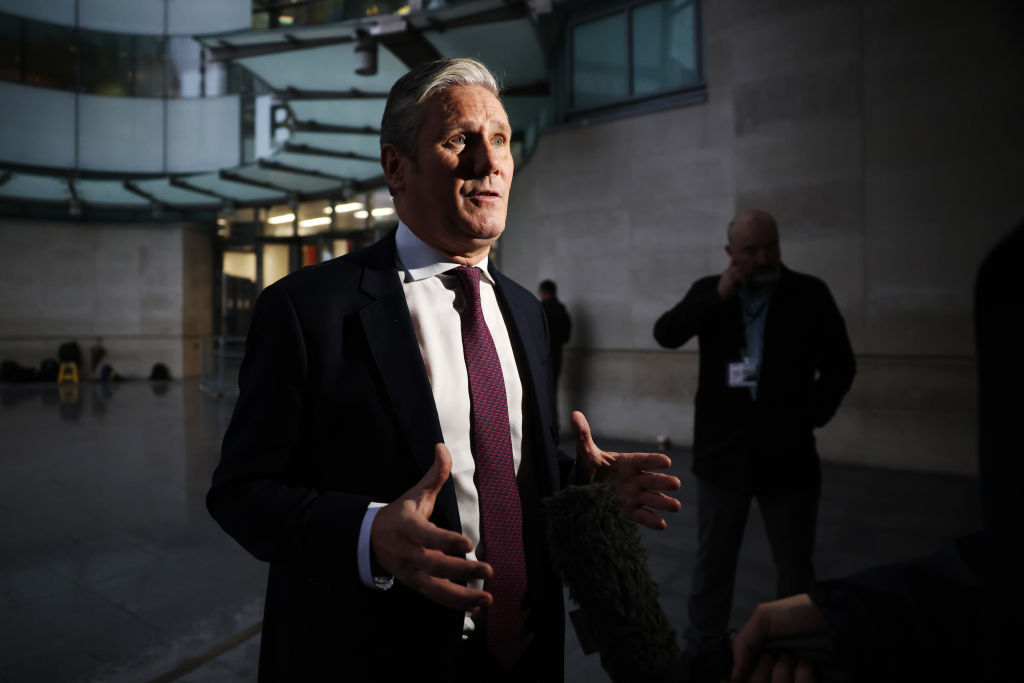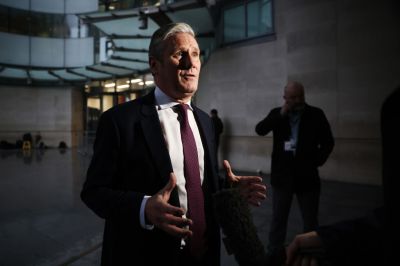The last few months have seen non-stop chaos inside the Conservative Party in the U.K. Boris Johnson stepped down in early July, after six months of scandals involving his and his staff’s repeated and flagrant breaking of pandemic restrictions. He was replaced by Liz Truss, who, while neither the favorite of Tory members nor of Tory MPs, was still elevated to the position as prime minister due to a quirk in the party leader selection system.
Once in office, Truss tried to be a new Margaret Thatcher, pushing through much-needed supply-side reforms, but she lacked Thatcher’s mandate and authority. MPs who had supported Rishi Sunak soon rebelled, and Truss, rather than threatening a general election if her party’s MPs did not get back in line (as Thatcher might have done), tried to compromise and backed away from several key reforms. Her allies saw this U-turn as a betrayal, and it effectively sealed her fate.
With the Tory Party down in the polls by more than 25 percent, margins not seen since Labour’s Tony Blair ruled, it is easy to assume that Rishi Sunak would be a caretaker prime minister until the next scheduled election in just over two years. No one disputes that Labour is favored to win the next election, but the crisis in the Tory Party has overshadowed the many problems that the Labour Party faces.
First, Labour leader Keir Starmer is no Tony Blair. And, for that matter, Rishi Sunak is no John Major, the prime minister whom Blair defeated in a landslide victory in 1997. Tony Blair started off as Labour leader in 1994 with a net approval rating of +20 percent and those ratings never dipped in the years leading up to the election. In fact, by the time the election rolled around three years later, his net approval rating was close to +40 percent.
On the other hand, a currency crisis drove his opponent John Major’s approval rating off a cliff in the fall of 1992. In the span of a year, Major went from +20 percent net approval to negative 50 percent. When you look at it this way, it’s amazing that Tony Blair and Labour won the 1997 election by only 12.5 points.
As for Starmer, less than a year ago, before Johnson’s troubles began, only 41 percent of his own party’s voters said they thought he should remain leader of the Labour Party, with the same number saying he should stand down. Even at the end of August this year, with the Tory Party in disarray and Johnson having just been forced to resign in disgrace, just 50 percent of Labour voters thought Starmer should stay as leader.
A plurality of all voters find Starmer to be weak and say he doesn’t look like a prime minister in waiting, and just 35 percent describe Starmer as trustworthy (against the same number disagreeing).
As for Sunak, he has a positive net favorability, and his numbers are actually better than Starmer’s. Only 29 percent of voters expect him to be a poor or terrible prime minister (against 53 percent who believe he will be somewhere between great and average). A small plurality of voters also believe Sunak will make a better prime minister than Starmer.
Sunak’s problem is that he needs to translate his (relative) personal popularity into support for his party. Fortunately for him, there are a few more reasons to think Labour may once again be able to snatch defeat from the jaws of victory.
Brexit is still a headache. In 2019, Boris Johnson won the “red wall”—a grouping of working-class constituencies in Northern England and the region known as the Midlands that Labour had held for generations—by promising to get Brexit done. There is little doubt that Starmer would like to see the U.K. rejoin the EU, and the party’s metropolitan supporters would too, but campaigning on doing so would reduce Labour’s chances of winning back the “red wall.”
On the other hand, not promising to rejoin (or hold another referendum) would likely drive some voters to support EU-friendly spoiler parties such as the Liberal Democrats, something that may allow the Tories to win seats (because of opposition vote-splitting) in EU-friendly areas where they otherwise would have lost.
It is unlikely that campaigning to rejoin would lead to a net gain in seats for Labour, but as the party’s self-esteem has soared, the rejoiners—and others who promote questionable policies that, while popular among party activists, are unpopular with the general population—have become louder. Hubris has doomed many parties, and unless Keir Starmer can keep his and his party’s hubris in check over the next two years, Election Day could bring a nasty surprise.
Austerity is back. Austerity was the flagship policy of the David Cameron government, with severe spending cuts in the aftermath of the financial crisis. While Labour could and did criticize certain specific cuts, it was forced to recognize that cutting spending was inevitable. This led to lackluster campaigns in 2010 and 2015, with both main parties promising more or less the same thing. “Slightly less austerity” was not a message that was ever going to fire up Labour activists and sympathizers.
There are two scenarios for the next election: Either the economy has recovered and the deficit is under control, or it hasn’t and it isn’t. In the first scenario, Sunak can take credit as the man whose pragmatism and economic competence saved the British economy.
In the second scenario, Labour would be forced to run on a program of (at least some) austerity, or lose all economic credibility. In this scenario, Labour would risk losing voters to left-winged spoiler parties such as the Green Party, and in Scotland the Scottish National Party. Speaking of whom …
Scottish separatists. The separatist Scottish National Party holds 44 seats in the House of Commons but is deeply unpopular in England. In 2015, in fact, Cameron won re-election by threatening English voters with the prospect of a Labour government in the pocket of Scottish separatists.
The SNP has made it absolutely clear that the price of its support will be another independence referendum. As the election looms nearer, Starmer will be asked repeatedly whether he will grant the SNP this concession, and if not, how he intends to govern if his party does not win an outright majority.
Volatility. After 1992, British voters had made up their minds about Major’s party and government, and nothing would make them change their mind. Even though the economy actually went on to strongly recover over the course of Major’s term, his public image, and the narrative, had already been set in stone.
While this could be Sunak’s fate, these days British voters are more prone to change their minds. Right now, the Conservatives are polling around an abysmal 25 to 28 percent. But in June 2019, the party polled as low as 20 to 25 percent, with a few polls having the party down in the teens. Six months later, the party won a landslide 43.6 percent of the vote. Labour also scored stable double-digit leads for most of Cameron’s first term, but on Election Day, the Tories won by 6.6 percentage points.
None of this proves that the Tories are necessarily bound for a comeback. But there are millions of British voters who can be classified as “reluctant Tories”—quick to abandon the party in the polls between the elections, but for the most part returning on election day. In the 1990s, or really any other decade, a 25 percent lead definitely would have been insurmountable. Whether it still is the case remains to be seen.
Rishi Sunak definitely has his work cut out for him—but so does Keir Starmer.






Please note that we at The Dispatch hold ourselves, our work, and our commenters to a higher standard than other places on the internet. We welcome comments that foster genuine debate or discussion—including comments critical of us or our work—but responses that include ad hominem attacks on fellow Dispatch members or are intended to stoke fear and anger may be moderated.
With your membership, you only have the ability to comment on The Morning Dispatch articles. Consider upgrading to join the conversation everywhere.